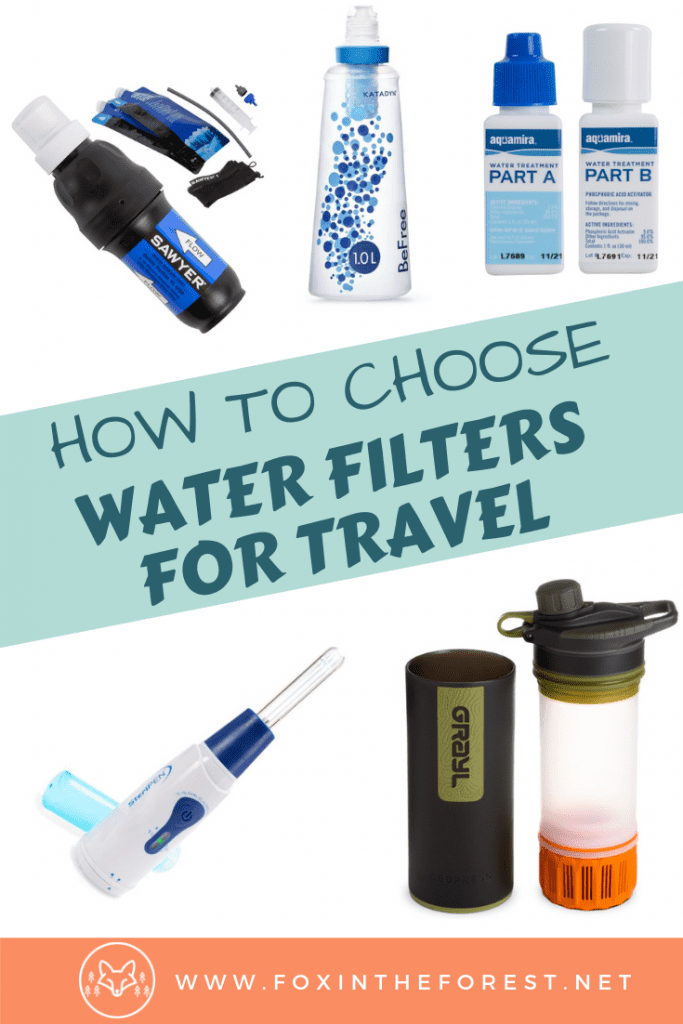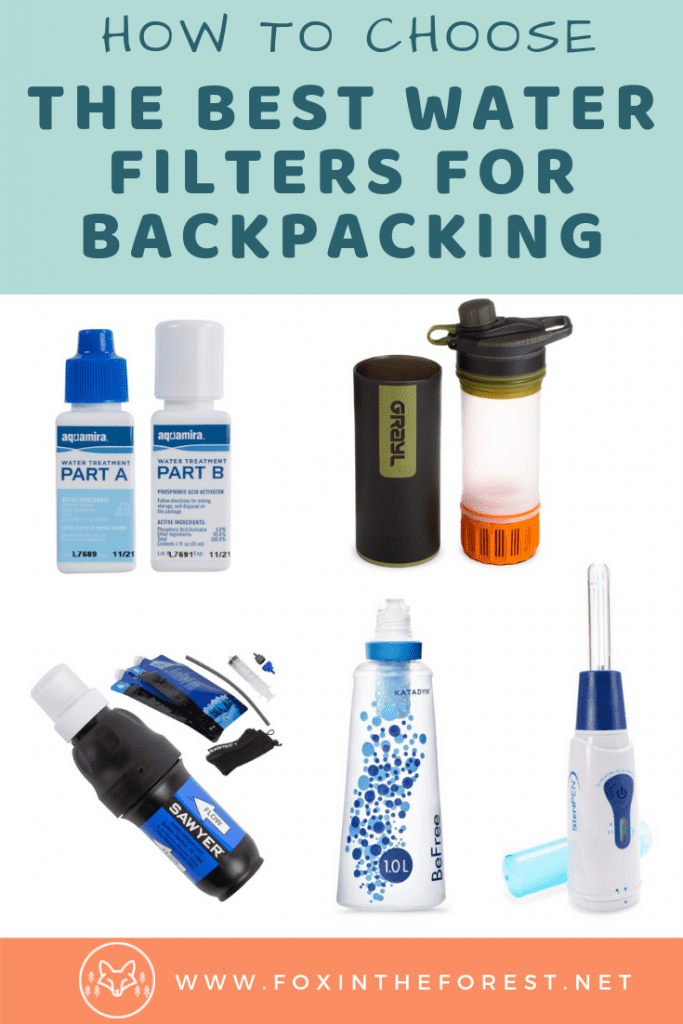Last Updated on June 2, 2021 by foxintheforest
When it comes to selecting the best water purifier for travel and backpacking, it can seem like there are infinite options. Don’t be fooled, not all water filters for travel are created equally. In fact, while testing certain methods, some have even made me sick. Therefore, it’s super-important to do your research and be well-informed when choosing the best portable water purifier for travel
Over the past several years of testing outdoor gear and travel accessories for big-name media outlets, I’ve somehow amassed a large collection of water filters and water purifiers. In fact, I own at least six different systems and I’ve put them through the wringer. I not only utilize each of these water purifiers and filters while camping and backpacking, but I haven’t used a single plastic water bottle while traveling internationally in over five years.
This round-up of the best travel water filters comes from years of field testing and is a labor of love. Here’s what to expect:
- A look at the differences between water filtration and purification
- Things to consider when buying a water purifier for travel
- Tips for not using plastic water bottles when you travel
- An in-depth look at the best portable water purifiers for travel and backpacking
What’s the Difference Between a Water Filter and a Water Purifier?
Although the terms “water purifier” and “water filter” are used relatively interchangeably, they are not the same thing. Here in the US, we don’t have a lot of viruses in our water sources. Even the gnarliest of potholes in the desert don’t have a huge concentration of water-borne viruses.
However, throughout the rest of the world, this isn’t the case. This is largely due to things like fecal matter, different chemical makeup and other concerns in the world’s water sources.
Therefore, when you use a water filter for travel, you actually want to purchase a water purifier for travel instead. A portable water purifier protects you from nasty viruses such as Hepatitis A and Norovirus. I got Norovirus while traveling in Belize from using a water filter instead of a purifier. Trust me, it was not pretty.
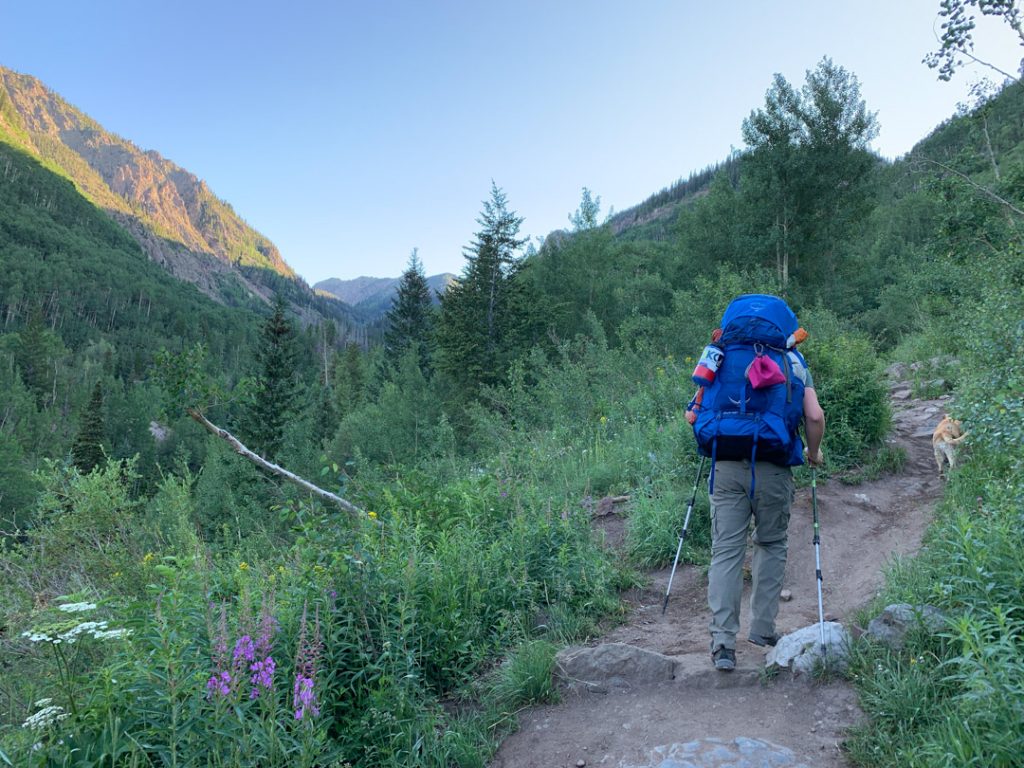
When Should You Use a Water Filter?
So what’s the point of ever owning a water filter for travel if you really need a water purifier? If you plan on traveling in the backcountry of either the US or Canada you’ll want to use a certified water filter that meets the EPA’s Guide Standard and Protocol for Testing Microbiological Purifiers.
In short, a water filter is designed to remove harmful bacteria and protozoa (think E.Coli and Giardia) from the water. Water filtration for backpacking also gets rid of floating solids, which makes drinking from something less than appetizing a bit more palatable.
Related: The Complete Beginner Backpacking Gear Guide
Why Use a Water Purifier for Travel?
It’s estimated that the world consumes one million disposable plastic bottles a minute. One. Freakin. Million! That is absolutely staggering. To make matters worse, only about 10% of the plastic in the world ever gets recycled, and once it’s recycled, it can’t be recycled again.
It’s no wonder we have a plastic problem and in many parts of the world where it’s unsafe to drink the tap water, there is zero infrastructure for handling plastic waste. So why make the problem worse when you travel?
The plastic burden is on everyone, and it’s up to us to do our small part to put an end to it. I’ve estimated that I’ve saved roughly 1,000 plastic bottles from going to the landfill in the past five years by using a water purifier when I travel.
What to Look for in a Water Purifier for Travel
The best water purifiers for travel have a few things in common. Each method and product certainly has pros and cons, but there are a few important features to look out for:
- Proper protection against bacteria, protozoa/cysts, and viruses. Having a travel water filter that will also filter out chemicals and heavy metals is definitely a plus, but not required.
- Size and weight. You need something practical. Something that will easily fit into your bag (carry on, day bag, what-have-you). Water purifiers tend to be heavy, so every ounce counts!
- Longevity. The best water filters for travel have a long lifespan. Keep in mind your filter isn’t infinite. Keep tabs on how much you use it, or how many years you have it for.
- Replaceable parts or a robust repair program. This is huge. Part of using a water filter is so you aren’t adding trash to the waste stream, so being able to order replacement parts is essential. Also, filters break, and more often than you would think. In fact, when I was trekking in Nepal, we had all three of our water purification systems break. You bet I judged each brand on how they handled the issue when I got back home.
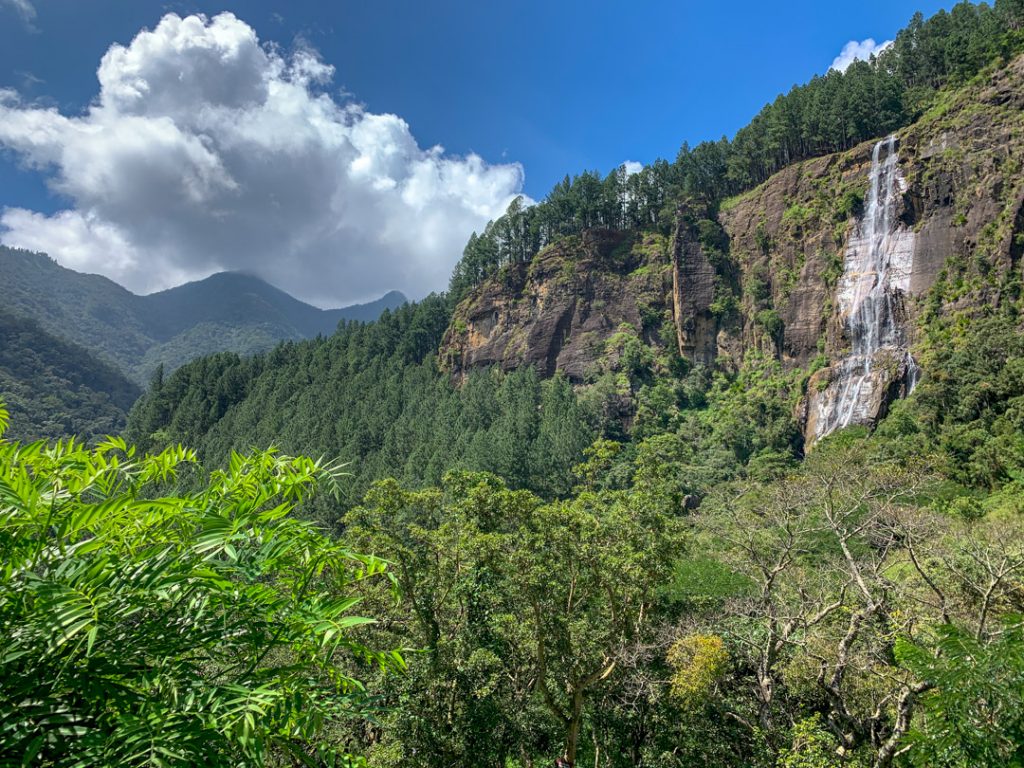
Tips for Traveling Without Using Plastic Disposable Water Bottles
Aside from bringing a handy water purifier along on your travels, what else can you do to reduce your plastic waste while you travel? Well, remember how I mentioned that we had three filters break in Nepal? We ended up relying on boiled water (which had its risks, but I’ll get to that later).
If you’re serious about reducing your impact on the waste stream, bring a backup purifier. That can be as simple as drops or tabs. Also, if your filter is battery powered, don’t forget some spare batteries. Water certainly does get old to drink, so if you want to quench your thirst with something different, opt for a drink that comes in a glass bottle or aluminum can.
Related: How to Start Traveling Sustainably
How to Avoid Getting Sick While Traveling
Confession time. After nearly 20 years of traveling internationally and living in other countries, I’ve certainly gotten my fair share of illnesses abroad. If the tap is unsafe to drink in the country you’re visiting, also follow these rules regarding food and hygiene:
- Don’t use the tap water to brush your teeth. You can get sick from brushing your teeth with tap water since bacteria and other unfriendly microbes can get into your system via your gums.
- When you’re sourcing your water from the backcountry to the dusty cities, always aim for a flowing source. Flowing water is almost always less infested than stagnant water, although we’ve all been in situations where a scummy pond or nasty pothole is our only choice.
- Only eat fully-cooked meat and vegetables. Avoid things like salad, raw fruits (unless there is a thick rind like bananas and oranges), raw veggies and undercooked or raw meat.
- Be wary of street food. To be honest, I eat a lot of street food, but there are certain countries where I stick to hygenic restaurants recommended to me by others. The best bet for street food is to stand in the longest line you can find – busy usually means the locals know it’s clean.
- Avoid ice. The water might be from the tap and freezing it doesn’t get rid of bugs!
The Best Portable Water Purifiers for Travel
This list of awesome water filters and water purifiers takes a deep dive into choosing the best water purifier for travel. Each of these items has been rigorously tested in a variety of different countries where it’s unsafe drink the tap water. Below you’ll find product information, prices, pros, and cons of each system.
The Sawyer Squeeze Water Filtration System (The Sawyer Micro Squeeze and Sawyer Mini
Product Overview
The Sawyer Squeeze systems have been in my water filtration arsenal for over 6 years now. My Sawyer Squeeze is my go-to filter for backcountry camping and backpacking. I’ve put some nasty water through my Sawyer Squeeze and never had issues.
Their entire lineup is cost-effective, light-weight and simple to use. I relied on this system almost entirely while we were in Nepal – until the bag broke, which is the usual fail-point on this filter. It’s easy to order replacement parts and the filter comes with a lifetime guarantee. Newer models also give you the parts to put the filter in-line with your water bladder. Alternatively, you can screw the filter directly on a small-mouthed water bottle.
The 0.1 Micron Filtration Technology protects against cysts, protozoa, and bacteria, but it doesn’t protect against viruses. I didn’t get sick in Nepal, but I may have also gotten lucky.
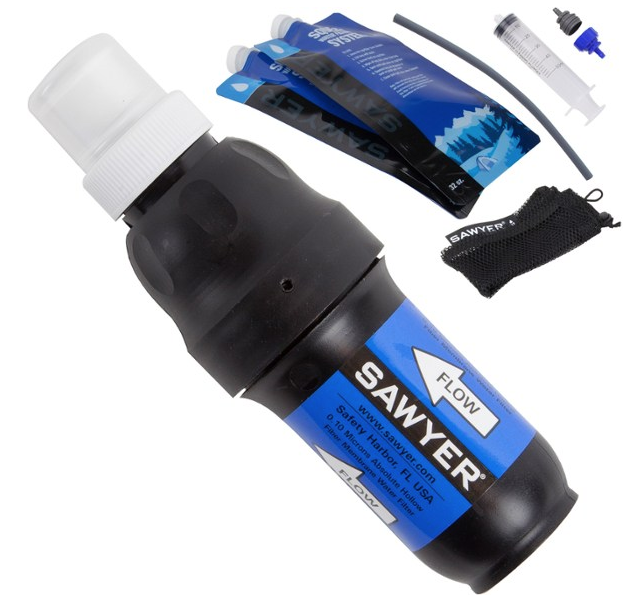
Product Specs
- Removes: Protozoa, bacteria
- Filter medium: Hollow-fiber membrane, beware, uses BPA bags (but you can attach directly in-line to your water bladder or directly to a screw-cap bottle.
- Field cleanable? Yes
- Output: 1.7 liters per minute
- Weight: 3 oz unfilled
- Replaceable parts? yes
- Price: $34.95 for the Squeeze System
Maintainance
Backflush filter with syringe after each trip or after several days of use. Rinse with chlorine solution prior to long-term storage. Always be sure to check the filter prior to heading out. Never allow the filter to freeze.
Pros
- Lightweight
- Affordable
- Easy to get replacement bags
- Simple and quick to use
- Robust filtration technology
Cons
- Bags wear out quickly
- If you don’t backwash the filter and clean it often, it will clog severely
- Doesn’t protect against viruses
Best For
Backpacking and backcountry camping in the US and Canada when you need a lightweight, affordable system suitable for just you or two people.
Grayl GEOPRESS Purifier
Product Overview
The Grayle GEOPRESS Purifier is the absolute best travel water bottle with a filter. Period. It can literally handle everything. One of my favorite features is that you can fill up the GEOPRESS literally anywhere, you don’t need to carry around the filter, since it’s integrated into the bottle.
It takes just a few seconds to filter, which means it’s smaller capacity isn’t a bit deal if you find yourself in the need of a good water chug. It could be lighter, it could be cheaper, but it’s a small downside for a filter that can handle anything you throw its way.
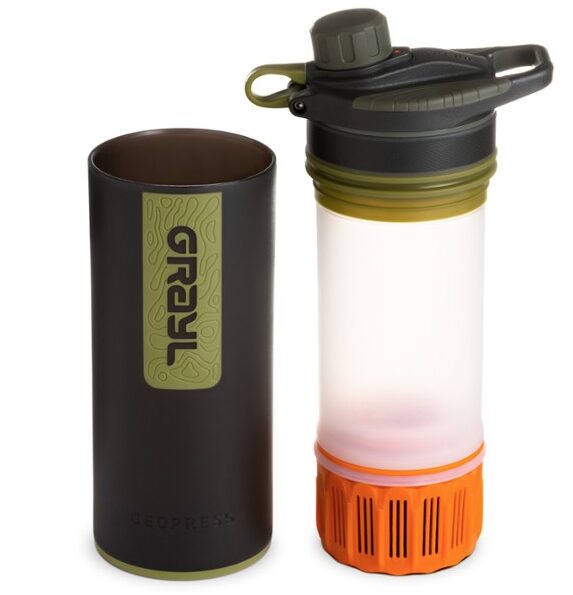
Product Specs
- Removes: Protozoa, bacteria, viruses, heavy metals, pesticides, chemicals, microplastics
- Filter medium: electro absorption with activated carbon
- Field cleanable? No
- Output: 5 L per minute or 24 oz in 8 seconds
- Weight: 15.9 oz unfilled
- Replaceable parts? Yes
- Price: $89.95
Maintainance
Replace cartridge after 250 cycles or 250 L. You’ll know when the press time is longer (harder to press) and takes around 25 seconds or after 3 years of use.
Pros
- Protects against viruses, bacteria, protozoa/cysts, pesticides, chemicals, microplastics, and heavy metals.
- Integrated filter/bottle combo
- Replaceable filter components
- can use in unclear/dirty water
Cons
- Pricey
- Heavy
- A small amount of water for two people to share
Best For
International travel where you can’t drink the water. This filter works great both on-the-go and at your accommodation. It’s a bit too heavy to justify using while hiking and backcountry camping, but if I’m on a mellower outing, I may bring it along. This is one of my primary ways of purifying water while overseas.
SteriPEN Adventurer Water Purifier and SteriPEN Classic IV Water Purifier
Product Overview
Before I jumped into the wonderful world of water purification, and back before there were a lot of products on the market, I lived in Malaysia and owned a SteriPEN. I’ve been using this handy UV light system successfully for years.
Although it’s difficult to put your faith in a blue light, it does work. I’ve used a SteriPEN in countless countries including Laos, Nepal, and Sri Lanka. It is one of the best water purifiers for travel on the market I’ve always been a fan of the Classic, but each model essential does the same thing. With a click or two (depending on how much water you’re purifying) and some mixing, you’ll have safe, clean water in about 2 minutes.
A couple of downsides, it relies on batteries, can’t be used in excessively dirty water with floaters, and it isn’t an ideal choice for when you need to purify your water outside of your accommodation.
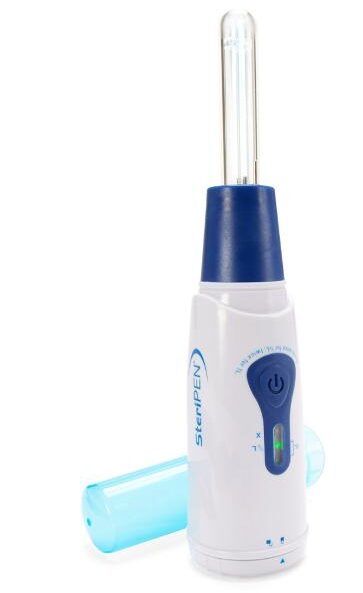
Product Specs
- Removes: Protozoa, bacteria, and viruses
- Filter medium: UV Lamp
- Field cleanable? yes, just wipe it down as needed
- Output: 32 fluid oz in 90 seconds
- Weight: 6.3 oz unfilled but with batteries
- Replaceable parts? no, but a stout warranty program
- Price: $79.95 for the Classic model
Maintainance
Always carry a spare pair of batteries. One set of batteries claims to purify up to 50 liters, but we’ve found that it’s actually much less (more like 20 or so). The SteriPEN Premium Lamp Life Pledge lets you replace your pen after 8,000 uses if you register your product.
Pros
- Compact
- Relatively lightweight
- True purification that protects against viruses, protozoa/cysts, and bacteria.
- Great if you want to have your filtration separate (allows you to carry more water in your bottle)
- Very robust repair and return program
Cons
- Depends on batteries and bulbs. Our SteriPEN broke in Nepal, but SteriPEN (now owned by Katadyn) upgraded our 5-year-old model for free.
- Difficult to trust since it doesn’t have mechanical parts
- Doesn’t work well in cloudy or dirty water (you’ll need to prefilter it if there are floaties in your water.
- Doesn’t do anything for smell or taste.
Best For
International travel where you want to carry more water that doesn’t get displaced by having a filter in your bottle. It works well because you can easily use the purified water for brushing your teeth and hygiene. My SteriPEN comes with me on every overseas trip I take.
LiseStraw Go and LifeStraw Universal
Product Overview
I actually got Norovirus from using a LifeStraw Go while traveling in Belize. I contacted LifeStraw after this had happened, and they claimed it might have been a loose gasket. The LifeStraw Go is a great concept, but poor execution. This two-and-one travel water bottle with a filter appears like a good idea, but the filter displaces so much water, there’s hardly anything left to drink from.
LifeStraw sent me a Universal model to test, which has universal adapters to fit on any water bottle. The adapters worked okay, but a moldy smell developed after a few days of use. Overall, the filter worked fine in Sri Lanka, where I was mostly using the tap to get my drinking water. However, upon returning home, I realized that LifeStraw products don’t protect against viruses, leaving you susceptible to things like hepatitis and norovirus.
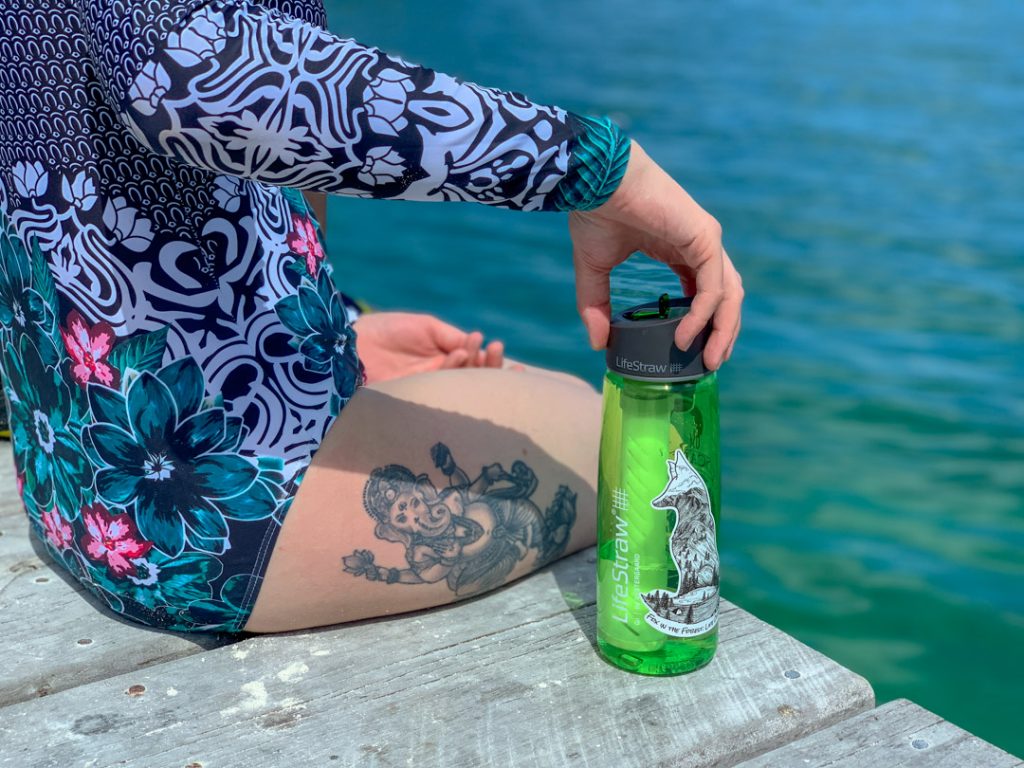
Product Specs
- Removes: Protozoa, bacteria, pesticides (reduction), VOCs (reduction)
- Filter medium: Hollow fiber membrane with carbon filter
- Field cleanable? yes
- Output: Depends on size of the bottle
- Weight: 3.7 oz plus the weight of your water bottle
- Replaceable parts? no.
- Price: $34.95 for the Universal system
Maintainance
Filter lasts for 1,000g of filtering. The lid and nozzle will require cleaning with soapy water after a few days to avoid the smell. Rinse the filter with clean water to clean. Do not store when wet.
Pros
- The water filter attaches to the bottle, so you can fill on the go.
- The filter itself is lightweight and easy to use.
Cons
- This is not a purifier and does not protect against viruses. Not an ideal choice for travel.
- The nozzle developed a moldy smell after a few days, but since I couldn’t use the tap water, I couldn’t rinse or wash the filter which was problematic.
Best For
I honestly would not recommend anyone purchase a LifeStraw Go, it’s simply too small to be effective. The LifeStraw Universal is a reasonable choice for hikers who hike long distances and rely on a water bottle instead of a bladder.
Katadyn BeFree
Product Overview
Many trail runners swear by the Katadyn BeFree, loving its compact nature, easy price tag, and next-to-nothing weight. I can see why it’s a fan favorite, but I don’t like how the filter slowly stop working after just a few days and the flow is the slowest out of all the filters on this list. With that being said, I’m sure improvements will be made over the years, so after a few more versions, I’d expect this filter to be a heavy contender in the backpacking and hiking world
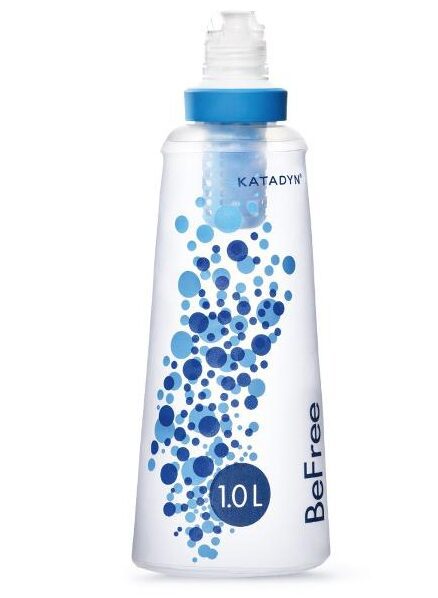
Product Specs
- Removes: Protozoa, bacteria
- Filter medium: Hollow fiber membrane
- Field cleanable? yes
- Output: Depends on size of the bottle
- Weight: 2.3 oz plus the weight of your water bottle
- Replaceable parts? yes.
- Price: $44.95 for the Universal system
Maintainance
To clean rinse with clean water then shake or swish. Allow to fully dry before long-term storage. Replace the filter after 1,000 liters.
Pros
- Lightweight
- Compact
- Affordable
- Has replacement parts
Cons
- Doesn’t purify, leaving you vulnerable to viruses
- A super-slow flow rate that decreases with each use until it’s cleaned, making it not an ideal choice for backpacking or travel
Best for:
Trail runners or ultra-lightweight backpackers who can deal with the downsides of slow water flow.
Aquamira Water Treatment Drops
Product Overview
Aquamira makes purification drops you place in your water. The chlorine dioxide removes 99.9% of bacteria, viruses, cysts, and protozoa. Simply follow the instructions on the packaging for each drop type and wait (usually 20 minutes or so). I like to source my water from clear, running sources, but this will still work in a pinch with muddy water (I’d recommend a pre-filer unless you don’t mind a silty taste).
My last resort is always Aquamira treatment drops. It isn’t the most ideal system to always rely on since you have to wait a minute to drink the water, and this is a consumable product, meaning you can run out, but for around $15 it makes an excellent backup purification system.
Just remember to thread your water, meaning add the drops, tip your bottle upside down and slowly open it until a few drops of water spill over. This ensures that any dirty water along the threads and cap get purified too.
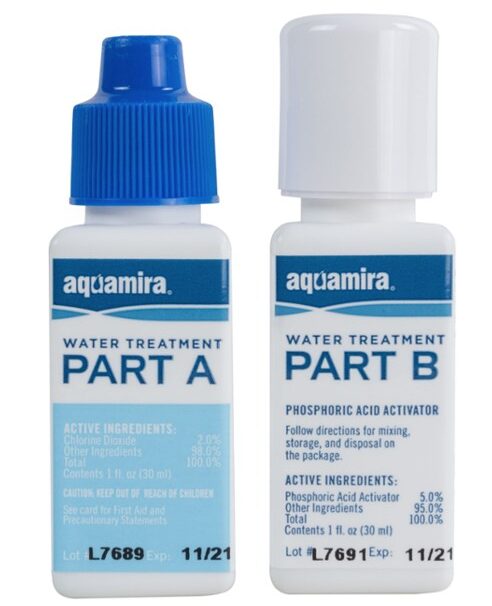
Product Specs
- Removes: Protozoa, bacteria, viruses
- Filter medium: non-coloring, non-taste altering drops
- Field cleanable? NA
- Output: 30 gallons per bottle
- Weight: 2 fluid oz pls the bottle weight
- Replaceable parts? NA
- Price: $14.95 for the Universal system
Maintainance
No maintenance required here, just be sure to follow the instructions on the bottle. Also, note the expiration dates and replace when expired.
Pros
- Super lightweight and compact
- Effective against viruses
- Unlike the iodine pills of yesteryear, these drops won’t discolor the water or give it a bad taste or smell.
Cons
- A filter or purification system lasts longer
- You have to wait until you can drink
Best for
A backup method in case your primary travel water purifier breaks. This is also an awesome option for mountaineers or alpine climbers who have to carry a lot of weight and bulky gear.
Boiled Water
You can’t really mention water filtration without mentioning the tried-and-true boil-it method. If your water filter fails you and you forget a backup filtration product, you can still get clean, safe drinking water.
This isn’t always an option when you travel, but after our water filter snafu in Nepal, we ended up drinking boiled water for several days while trekking in the Khumbu. I wouldn’t recommend this, simply because you don’t’ know how long the water was boiled for, but we took a gamble. Ideally, you want the water to boil for one minute in order to sterilize the water from bacteria, protozoa, and viruses.
Keep in mind you may need to pre-filter the water. We’ve used shirts while backpacking to get ride of floaties and other unwanted critters out of the water.
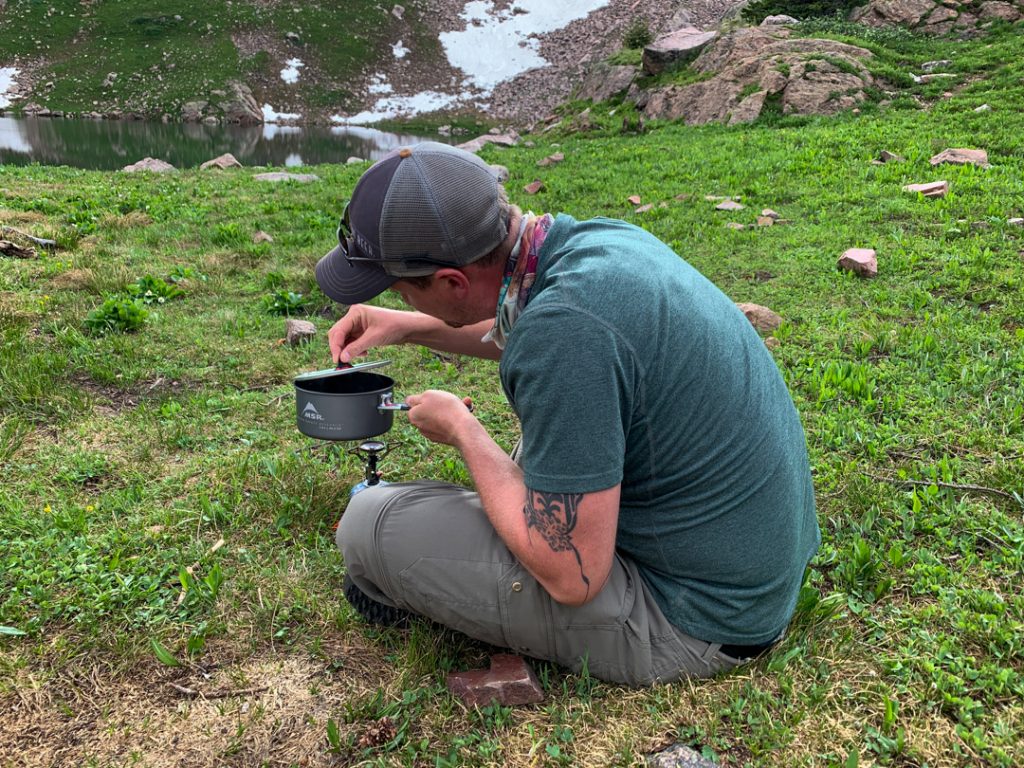
Pros
- No special gear required.
- It works effectively
Cons
- Slow and you use your stove fuel.
- Might not be available to travelers.
- You have to wait for the water to cool, especially if you are putting it in a bladder (use a mini-fridge, or a stream to help cool the water bottle)
As you can see, there are so many different options when it comes to water filters for travel. The best water filters for travel protect you against the various microorganisms you are most likely to encounter on your adventures.
